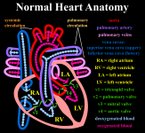Drugs-of-abuse testing is one of MLO's important topics this month. And from news accounts lately, it is an area that may keep medical labs, among other healthcare facilities, on their toes. A famous quotation--"Give me Librium, or give me meth"--from the 1970 film The Boys in the Band has taken on new meaning in the 21st century.
[ILLUSTRATION OMITTED]
Methamphetamine is the hot new "drug of choice." Initially popular in rural areas and on the West Coast, the drug has insidiously infiltrated every socioeconomic nook and cranny of the country. Statistics are chilling. Missouri tops the meth-making list with 8,000 labs, equipment caches, and toxic dumps. Fifty-eight percent of 500 law-enforcement agencies in 45 states revealed through a National Association of Counties survey that meth is now their biggest drug problem.
This "poor man's cocaine" is a plague that is not soon going away. Its ravages are overwhelmingly apparent. Meth addicts injecting the drug share unsterilized needles, often contracting HIV, hepatitis B and C, and necrotizing fasciitis. Severe weight loss attributed to even brief usage is known as the "Jenny Crank Diet." And "meth mouth" horrifies dentists. Hydrocholoric acid, combined with high volumes of sugar in addicts' diets, means their teeth break or fall out with regularity. Prison budgets are decimated because of dental-care costs for inmates from the meth subculture.
Addicted pregnant women give birth to babies with "worm heart" (transposition of the great vessels), a sure sign of meth abuse. Children exposed to meth in the home suffer from volatile fumes and caustic chemicals, their yards often dumpsites for hazardous meth waste. These children--who generally suffer maltreatment at the hands of meth-addicted parents--are removed to grossly overfilled social-services care facilities.
Risks to children and users include house fires from highly volatile combinations of ingredients brewed to make the concoction. Vanderbilt University Burn Center's director speaks about this issue as it affects healthcare: As many as one-third of its burn cases at a given time in the past year were due to meth-lab explosions. These victims usually do not have health insurance, meaning that Vanderbilt faces an uncompensated care burden of $5 to $10 million annually. Hospital burn units warn that the financial crisis may mean closure. In Mississippi, one burn center suspended new admissions this year and may shut down permanently.
Even nonusers are adversely affected--and not just because of exorbitant increases in meth-motivated crime. Homes once used as meth labs are permeated in the cooking process with drain cleanser, gasoline, liquid ammonia fertilizer, lye, red phosphorous, toluene, sulfuric acid, hydrochloric acid, and xylene, which extract meth-amphetamine from diet tablets and OTC cold medicines. Unknowing new owners of such properties suffer serious health problems from chemically saturated walls and carpets, and seek care from doctors and hospitals. One social worker arrived to seek help at an ER after simply driving a meth addict to treatment, thus exposing herself to chemical fumes from his clothing.
Drug abuse has been part of the American landscape since Victorian times when laudanum was the rage. (It and its modern relative, paregoric, are no longer manufactured.) We have seen alcohol prohibition come and go, witnessed the rise and fall of LSD and PCP, debated the legal and/or medical issues of marijuana use for years, and watched as crack cocaine debilitated segments of society. Meth has not only brought an unfortunate lifelong tragedy to its victims' health, but has also wrought an undeniably pervasive threat within the entire healthcare community, which it is just beginning to address.
The irreverent comedian George Carlin long ago wisecracked, "Why is there so much controversy about drug testing? I know plenty of guys who would be willing to test any drug they could come up with?" Test meth? Not even funny, George.
cbersch@nelsonpub.com
COPYRIGHT 2005 Nelson Publishing
COPYRIGHT 2005 Gale Group



